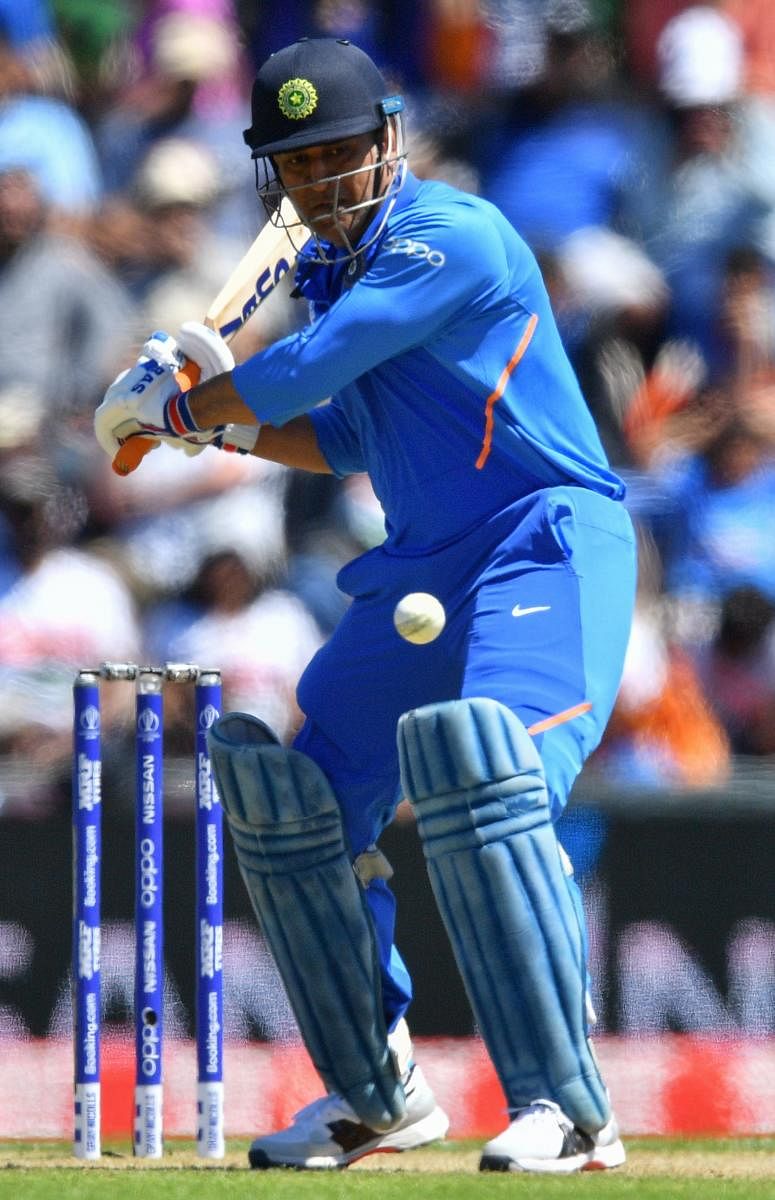
The intention was right, but not so much the intent. That’s how India’s decision to bat first on the Hampshire Bowl surface in Southampton, which generally tends to get better in the second half, can be summed up.
After India had survived by the skin of their teeth, Kedar Jadhav, who fought his way to a 68-ball 52 against stifling bowling by Afghanistan, revealed that lack of batting time for the middle-order was the major factor that influenced Virat Kohli to opt to bat first in the game on Saturday. And there was a sound reason behind that.
In the first three matches, the top three batsmen combined had scored 688 of India’s grand total of 918 runs. That’s almost 75 per cent of the total runs in the first three completed matches. Naturally, the trio had a major share of the balls faced as well. It, therefore, made great cricketing sense to bat first and play all 50 overs rather than chase a potentially small target which again could have denied game-time for the middle-order. And that’s not ideal going forward in the tournament.
Little did the team management imagine though that the plan would so spectacularly fail against a team that had conceded 397 runs in its previous match. In the process, it has exposed India’s soft underbelly that has always been there but temporarily masked because of the prolific top three. Most of India’s middle-order problems stem from a diffident M S Dhoni who is expected to marshal their batting once the top three or four depart early. His job is to hold one end up, rotate the strike and allow the likes of Jadhav and Hardik Pandya to play the big shots.
When Dhoni came on to bat on Saturday, India were 122/3 from 26.1 overs – not the position they would have envisaged but still far from being precarious. Kohli was in sublime touch despite the sluggishness in the pitch and Dhoni had just walked in with a couple of cameos behind him. Much to Indian supporters’ chagrin, Dhoni slipped into a mute mode that has often earned him a lot of flak recently. His inability to get singles perhaps led to Kohli’s dismissal too as the in-form batsman was denied the strike for a prolonged period.
While the former India skipper is impressive when he doesn’t have too many overs to face and just swings his bat from ball one, he goes into a shell if he has about 20 or more overs left in the innings (see the table). It happened at Lord’s as well last July when he finished with a 59-ball-37, attracting boos from the fans. India needed 183 from 23 overs, chasing England’s 322 but all they could muster during the time Dhoni was at the crease was 75 in about 19 overs.
This approach came back to haunt them against Afghanistan when they ended up scoring just 89 runs off the last 117 balls of the innings with Dhoni managing a painful 28 off 52 balls. His strike rate of 53.84 per 100 balls was the slowest for a batsman who had scored 10 or more runs. His partnership with Jadhav yielded a princely 57 off 84 balls as the duo struggled to find any momentum.
The laborious batting also drew a rather harsh criticism from the great Sachin Tendulkar.
"I felt slightly disappointed, it (Indian batting) could have been much better,” he noted in an interview to a TV channel. “I was also not happy with the partnership between Kedar and Dhoni, it was very slow. We batted 34 overs of spin bowling and scored 119 runs. This was one area where we didn't look comfortable at all. There was no positive intent. There were more than 2-3 dot balls. After Virat got out in the 38th over and till the 45th over we hadn't scored many runs.”
Their excellent bowling may have saved the day for India, who ended up posting a below par 224, but they won’t go unpunished by an experienced team. In a way, it’s a blessing in disguise that they got this wake-up call early enough in the tournament. Given K L Rahul’s penchant for making things difficult for himself when things are seemingly going good for him and in the event of law of average catching up with Rohit Sharma or Kohli, their middle-order will be tested again.
India can’t afford another slip-up of this manner as there are no more Afghanistans left in their path. The team management needs to address the issue immediately and effectively. Dhoni, for all his recent batting woes, is still valuable as he brings much more to the table than just his batting. There is a merit in suggestions that Dhoni be pushed up to No 4 where he can bat without the pressure of having to contend with a long tail and play with more freedom. That will also ensure Pandya gets decent a number of overs to provide that flourish in the end.